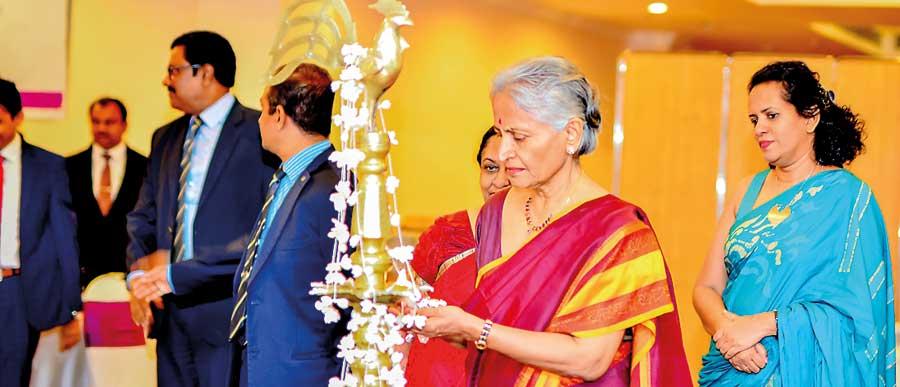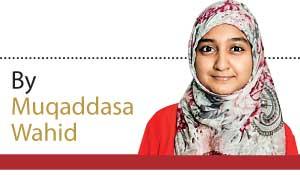29 Jan 2020 - {{hitsCtrl.values.hits}}

Dr. Premala Sivaprakasapillai, the first female engineer in Sri Lanka
- Sri Lanka has a female population of 52% but female engineers in the workforce come upto 9%
- Cultural influences, familial challenges, societal pressure identified as some of the main reasons
- Many girls aren’t encouraged to pursue engineering due to many of them not encouraged to take up STEM fields
When the word ‘engineer’ comes into your mind, what is the picture that your mind conjures? A man in overalls and the protective head gear. The word ‘engineer’, while gender neutral, in society, it is mostly attributed to males. Realizing this and wanting to promote women in the field of engineering, the Institute of Engineering Technology Young Professionals (IET-YP) Sri Lanka Network launched the ‘Young Woman Engineer of the Year’ award firstly in 2017. The 2019 awards ceremony was conducted for the second time on 17 January 2019 at the  Galadari Hotel.
Galadari Hotel.
The finalists were Eng. Ravini Hansika, Eng. Erandi Heshani, Eng. Anupama Pathirage Eng. Zahra Marzook and Eng. Prabodhi Mithila. The reserved finalist was Eng. Sanojani Wijesinghe.
In their presentations, the engineers brought out the challenges faced by female engineers in the field. “When a girl decides to choose Maths for A/Levels and then go into engineering, she gets much opposition from society. Even teachers don’t support the choice. Then when the girl graduates as an engineer, she faces challenges in her career,” stated Ms. Heshani, an electrical engineer by profession. She shared her experience as an electrical engineer working at a construction site and how she was mostly given to do the documentation work rather than field work. “I had to convince my boss that I was suitable for the job.
When I was in the field, the male engineers would always be protective of me but I made the most of the opportunities I got to work in the field,” she added.
Other finalists too echoed similar sentiments in their presentations. Ms. Marzook, an electrical engineer at the Lakvijaya Power Plant, shared how motherhood was challenging to the career. “Being a mother is no easy task, and people expected me to drop out after being a mother or not show a stellar performance as I did before being a mother.” Family pressure relating to travel, hazardous work environment and work timings were a few other challenges other finalists touched upon.
They also revealed there was a lack of female mentors for female engineers, and a lack of female role models in engineering for female students to take up the discipline. “Girls think that engineering is a very complex field. While it is complex, if one is interested and is able to grasp the concepts, the field is easier to navigate. Sadly, society and also teachers hardly encourage this field for girls and girls aren’t aware of many people in the field to look up to,” revealed Ms. Pathirage. The other finalists shared how some of their mentors in their professional lives were actually men, but added it was challenging to find a good mentor for a female engineer due to the general stereotyping in the field.
"Engineers contribute to the quality of life and can also cause a huge destruction - Dr. Premala Sivaprakasapillai"
Speaking at the awards ceremony, Ms. Amarasinghe, the Portfolio Lead of the Sri Lanka Resident Mission of the Asian Development Bank (ADB), explained how though other university faculties had a majority of female students, the engineering faculty had a huge disparity when it came to the male to female ratio. “Only 20% of the students are female,” she said.
She added that due to the engineering field being male dominated, women’s voices were mostly unheard. But she advised the young female engineers to be assertive. “Society often confuses assertiveness with aggression when it comes from a woman. But when it comes from a man, assertiveness is seen in a more positive light,” she noted. She advised female engineers to stand firm on their decisions and challenge themselves to push through the hurdles and make a niche for themselves in the field.
"Only 20% of engineering students are females in the universities across Sri Lanka - Eng. Manjula Amarasinghe"
The chief guest of the event, the first female engineer in Sri Lanka, Dr. Premala Sivaprakasapillai, revealed that during her time being a female engineer was unheard of. She stated that she was happy that there were more females joining the field, but added that not every girl who was talented in Math had a passion for engineering. “Engineering is a challenging field, and one has to have the passion to take on the challenges,” she stressed. She added that regardless of gender, that interest and passion had to be there. “Engineers have a huge responsibility as they contribute to the quality of life and at the same time a small mistake on their side could cause a huge destruction. Engineers should always be alert, and this comes from within them when they are passionate about the field,” she said.
IET Young Woman Engineer of the Year 2017 winner, Ms. Sashika Fernando said she always wondered why females were encouraged to join the engineering field. “Theodore Von Karman stated that ‘scientists discover the world that exists, engineers create a world that never was.
’ When I analysed the quote, I realized that if this world was only created by one gender, how safe would it be? Therefore, it’s crucial to have women in this field too. Women too should create this world, so that it will be safe for both men and women to live in,” she said. She gave an example of how the airbag which was initially created by a male-only team of engineers was disastrous. The earlier versions which hit a man in the chest would hit a woman or a child in the chin because males hadn’t taken the smaller dimensions and frames into account. When females joined the team, the product became more effective.
She informed the finalists that it was their duty to take up the role of being ambassadors for the engineering profession, and to inspire young women to join the field. “We must debunk the myths and inspire young girls who have the ability and passion to become engineers, yet are unable to due to societal pressure. We must show society that being a female engineer is not an impossibility,” she asserted.
In her presentation, Ms. Marzook stated that cultural influences from a young age like dolls and fluffy toys instead of trucks and building blocks affected a girl’s critical thinking ability, and childhood shows that portray girls as damsels in distress waiting for their prince to save them made girls dependent. She portrayed these as reasons why in STEM (Science, Technology, Engineering and Mathematics) fields, there was only 20% female participation, while in other fields there was 58% female participation. “It’s refreshing to see the trends slightly changing now. However, much is to be desired. At school level, teachers still encourage boys to be engineers and girls to be doctors,” she said.
She stated that for the challenges that arise in the career, those in the field should support women engineers. “Equal opportunities should be provided regardless of gender, and women should be encouraged to take up challenges in their work life. When familial challenges come, the field should be supportive, and the families too should be supportive. For a new mother, a child-friendly work environment can be created,” she said.
She also promised to empower women in engineering. “Women are very strong. But they do not know how strong they are until their strength is tested. We aren’t Cinderellas or Sleeping Beauties, we, women are much more than that,” she stressed.
28 Nov 2024 19 minute ago
28 Nov 2024 2 hours ago
28 Nov 2024 3 hours ago
28 Nov 2024 3 hours ago
28 Nov 2024 4 hours ago